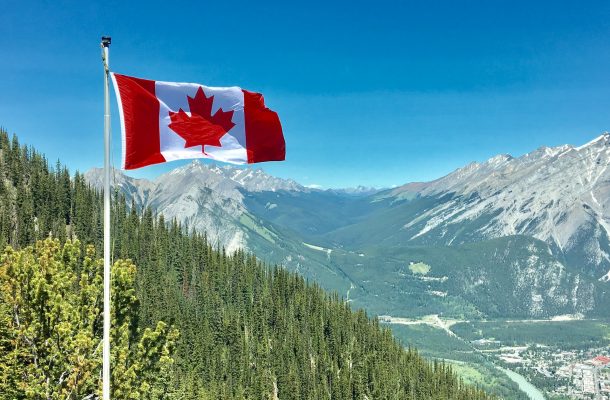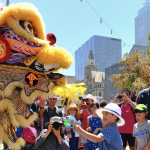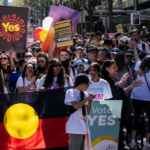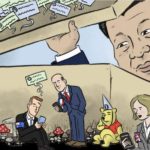Sharing the sovereign and the substance of Indigenous recognition

Australia began 2021 by changing a word in its national anthem. The phrase ‘we are young and free’, became ‘we are one and free’. The change was symbolic recognition that ‘young’ denies at least 50,000 years’ Indigenous occupation. Denial challenges the free nation that the anthem is supposed to celebrate.
However, freedom and oneness are contested concepts. The purpose of recognition is also contested. When it is only symbolic, it doesn’t add to freedom or include people in the political life of the state as the Uluru Statement of the Heart imagined.
In my book Sharing the Sovereign: Indigenous Peoples, Recognition, Treaties and the State, published last month, I used the Uluru Statement, and examples from Canada and New Zealand, to show that recognition can be much bigger than changing a word in an anthem that was never written to include everybody. If we want it to, recognition can make peoples’ lives better.
Democratic political systems often justify the state’s authority through the idea that citizens have come together to form a political community of their own free will. They have values and aspirations in common. Each citizen
recognises the other as politically equal. The state does not exercise a sovereign power over and above the citizen. Its powers come from the state’s collective authority. It is the people’s consent that makes a nation ‘one and free’.
The Governor-General changed the anthem on the Prime Minister’s advice that this symbolic recognition should be offered in the ‘spirit of unity’. However, robust and meaningful recognition involves two or more groups accepting another’s political legitimacy. It imagines a substantive unity achieved by ensuring space for distinctiveness in the political system. In practice, the UN Declaration on the Rights of Indigenous Peoples, says that this could mean that:
The Uluru Statement seeks full participation by asking the Australian people for an Indigenous share in their collective sovereignty, by way of a Voice to Parliament. It doesn’t explicitly mention treaties, but these provide one way of ‘coming together after a struggle’ by recognising the distinct institutions that the Declaration affirms.
In New Zealand, and sometimes in Canada, treaties or agreements affirm an indigenous share in public sovereignty alongside independent indigenous authority.
Sharing the sovereign is the basis of ‘oneness and freedom’. It allows recognition to transcend the symbolic.
However, Canadian examples show just how difficult it is to bring this ideal into practice. The state is usually unwilling to accept First Nations’ co-existence as distinctive political entities with protected authority to make decisions over their own affairs. For First Nations’, modern treaties may involve significant concessions to Crown authority.
For example, the Maa Nulth Agreement was signed by the Huy-ay-aht First Nations, Canada and British Colombia to recognise ‘inherent right to self-government’. This right includes authority in relation to natural resources and the delivery of health care and education.
However, when there is a conflict between Maa Nulth law and British Columbian law it is the provincial law that prevails. The colonial relationship is reinforced in the same way that it is reinforced in Australia when the Native Title Act 1993 requires native title rights to make way for other people’s rights if there is a conflict recognised under any other Act.
The idea that the Maa Nulth Agreement might allow coming together after a struggle, in the style of the Uluru Statement, is under-emphasised. Canada and British Columbia acknowledged the perspective of the Maa-nulth First Nations that harm and losses in relation to their aboriginal rights have occurred in the past and express regret if any actions or omissions of the Crown have contributed to that perspective.
In New Zealand, the acknowledgement of struggle, is implicit in settlements between iwi (tribes) and the Crown for breaches of the Treaty of Waitangi. In the first such settlement, with the Waikato iwi:
Breaches of the Treaty of Waitangi are common. Its contemporary meanings are matters of ongoing contest. However, Maori have never resiled from the view that the agreement was an enduring commitment based on each party recognising the other as a legitimate political authority.
In short, the treaty recognised the Crown’s right to govern, the Maori right to authority over their own affairs, and Maori access to the rights and privileges of British subjects. The meaning of these rights and privileges evolves with the development of New Zealand citizenship. The nature of recognition thus also evolves.
The Victorian Treaty Advancement Commissioner says that there may be instructive lessons to be drawn from ‘international best practice’ as it contemplates treaty negotiations. One lesson is that although treaties are contested and not always interpreted to meet indigenous expectations of justice, they are instruments of recognition. Potentially contributing to oneness and freedom.

Dominic O’Sullivan is Professor of Political Science at Charles Sturt University and Adjunct Professor in the Centre for Maori Health Research at the University of Auckland University of Technology. His recent publications include ‘We Are All Here to Stay’: citizenship, sovereignty and the UN Declaration on the Rights of Indigenous Peoples and Sharing the Sovereign: Recognition, Treaties and the State.













